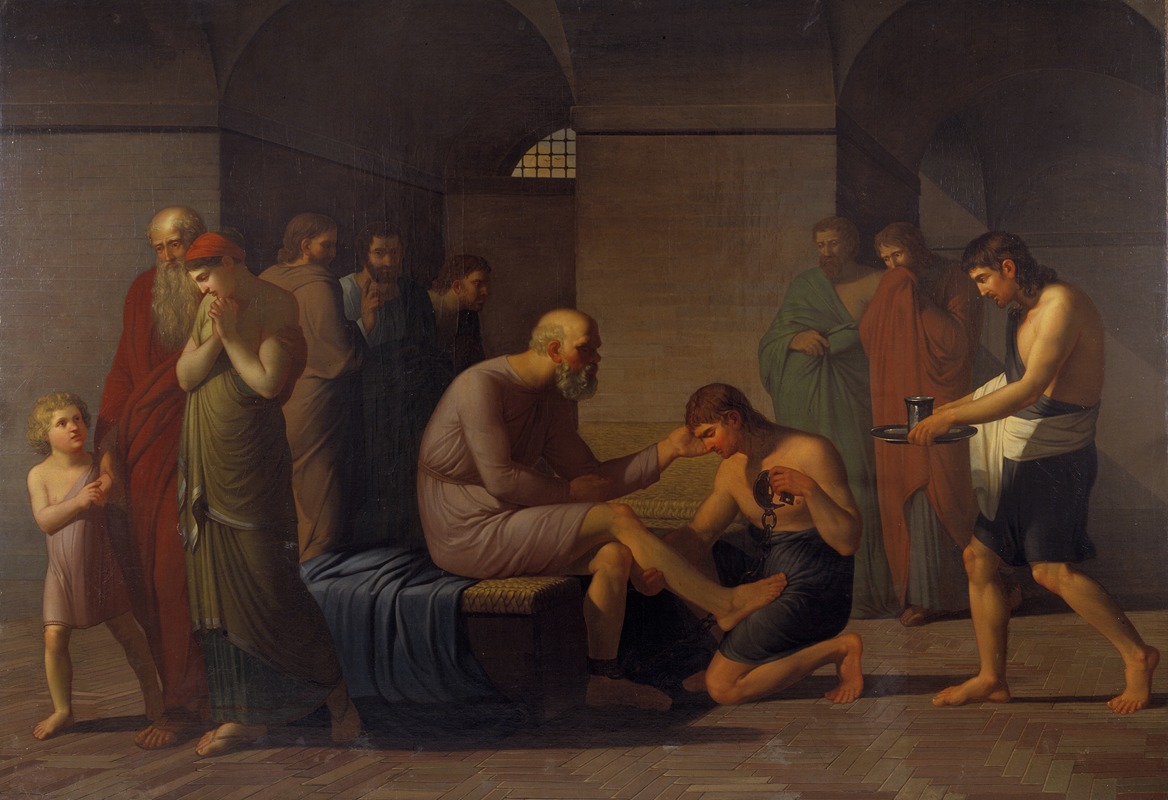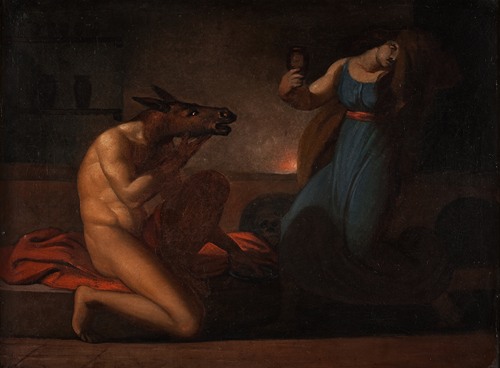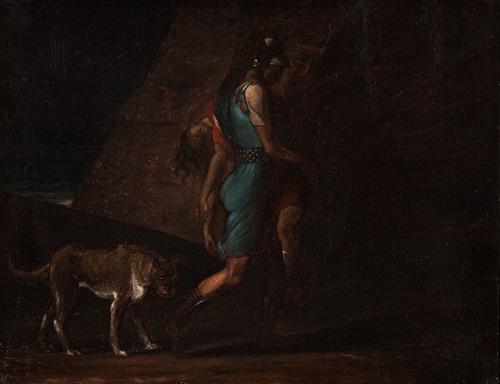
Christian Fædder Høyer was a painter and son of parish priest Jens Offesen Høyer and Sophie Dorothea née Helvad.
C.F. Høyer entered the Royal Danish Academy of Fine Arts after his confirmation, where he studied and won two silver medals in 1794 and 1797. He then competed for the Academy's gold medals, which he won in 1799 and 1803. He was a student of Nicolai Abraham Abildgaard, who seems to have had high hopes for him. When he applied for the large travel scholarship, it was also awarded to him in a laudatory manner from January 1, 1806. He was away for his full sixteen years and in Rome he became a good friend of Bertel Thorvaldsen as well as the master builder Peder Malling, who both kept their friendship for him. From Rome he sent home Hero Waiting for Leander (Royal Collection of Paintings), undoubtedly his best work, although it is very similar to his teacher, without reaching the warmth and depth of color that he had in his better pictures.
But from this moment on, it is almost as if the spirit is the way for Høyer; Nicolai Abraham Abildgaard was dead, and everyone else could rightly see nothing significant in him, despite the ease with which he composed and arranged very large pictures. Socrates Emptying the Goblet of Poison (Kronborg) and the stock exchange picture of Christian IV honoring Tyge Brahe with a Gold Chain are weak in execution. Even his membership picture, the Academy wanted it to be reworked one more time before it was hung; however, he became a member in 1812. Now one disappointment after another embittered his lonely life. The Academy would not recommend him as a royal history painter; as professors it chose the two younger men C.W. Eckersberg and J.L. Lund. Lund, the latter of whom had not even competed; in a third extraordinary election for professor, the votes were even between him and Johann Friderich Clemens, but the director decided in favor of Clemens. He could not even achieve the title of professor. After Nicolai Dajon's death (1823), he tried again to become a professor, but when this also failed, his statements against the Academy took on such a bitter tone that in 1826 he was struck off the rolls of the members and his reception piece was removed. Nevertheless, in 1828 he again applied for the professorship after Lorentzen's death. Once again, his friend, the university's master builder, P. Malling, tried to strike a blow for him so that this building could be decorated by Høyer (1835); but he got no votes for him. With tireless energy he painted and exhibited year after year, and when he died unmarried on June 23, 1855, his home on Gråbrødretorv was found stuffed with large paintings.
Despite the fact that as an artist he achieved so little of the goal that had preoccupied him in his youth, he seems to have been in many respects a gifted, but restless and combative nature. He threw himself with zeal into the dispute "about the usefulness of Nordic mythology for the fine arts". He repeatedly appealed to public opinion in his dispute with the Academy, both in separate pamphlets and in magazines; he expressed his views on art several times, but it seems that his writing has also been a voice in the wilderness. One can feel pity for a character who spends his life in a desolate struggle with his fate, but is more surprised that so much hope could have been attached to his youth than that he had such ill fortune.
He is buried at Assistens Cemetery.



